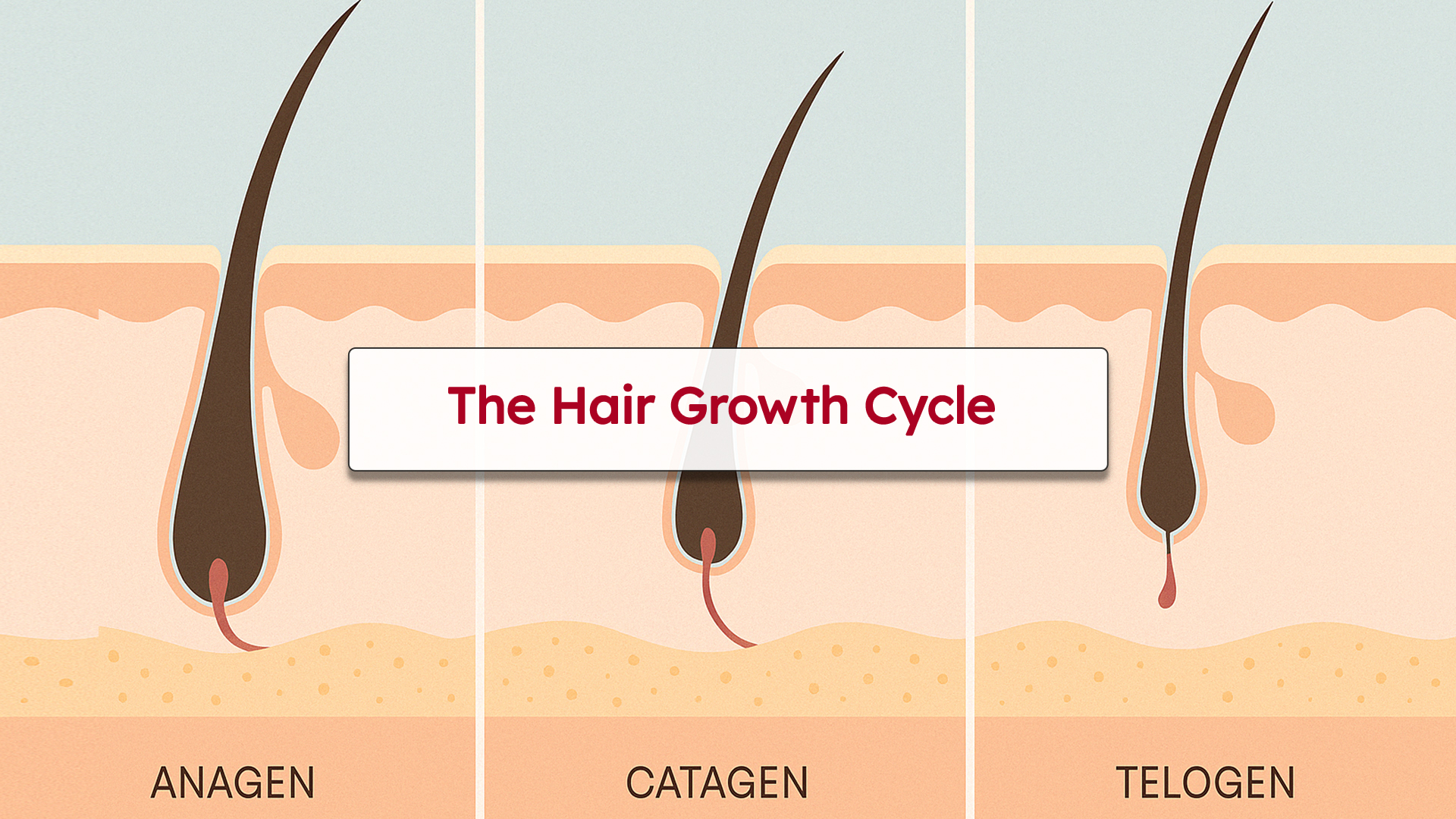Have you ever wondered why your hair grows, falls out, and then seems to grow back again? It’s all thanks to the natural hair growth cycle — a complex process that every strand on your head goes through. Understanding this cycle can help you better care for your hair, identify potential hair loss issues, and make more informed decisions when choosing treatments.
Let’s break down the three key stages of the hair growth cycle: Anagen, Catagen, and Telogen.
1. Anagen Phase: The Growth Stage
Duration: 2 to 7 years (varies by individual and genetics)
This is the phase where your hair is actively growing. Around 85-90% of your hair is in the anagen phase at any given time. During this stage, cells in the root of the hair are rapidly dividing, adding length to the hair shaft.
The longer your hair stays in this phase, the longer it can grow. Factors like age, health, genetics, and even diet play a role in determining the length of your anagen phase.
Key Highlights:
- Active growth phase
- Determines maximum hair length
- Longer duration = longer hair
2. Catagen Phase: The Transition Stage
Duration: 2 to 3 weeks
The catagen phase is a short transitional period that signals the end of active hair growth. During this time, the hair follicle shrinks, and the lower part of the hair stops growing. The follicle detaches from the blood supply, preparing for the next phase.
Only about 1-3% of your hair is in the catagen phase at any given time.
Key Highlights:
- Brief transition between growth and rest
- Hair detaches from blood supply
- Prepares for shedding
3. Telogen Phase: The Resting and Shedding Stage
Duration: 3 to 4 months
In the telogen phase, the hair doesn’t grow but stays in the follicle. At the end of this stage, the hair eventually falls out to make room for new growth as the follicle re-enters the anagen phase.
Roughly 10-15% of your hair is in this resting phase. It’s perfectly normal to shed 50-100 hairs a day as part of this process.
Key Highlights:
- Hair is released and falls out
- Follicle resets and re-enters anagen
- Normal part of hair turnover
Final Thoughts
Understanding the hair growth cycle is the first step toward healthier hair and managing hair loss. If you’re noticing excessive shedding or thinning, it could be due to a disruption in this cycle — from stress, hormonal changes, medication, or underlying health conditions.
Treatments, lifestyle changes, and professional guidance can help restore balance and encourage healthy hair regrowth. Be patient: since each hair is at a different stage of the cycle, improvements take time, but knowledge is power when it comes to your hair!


